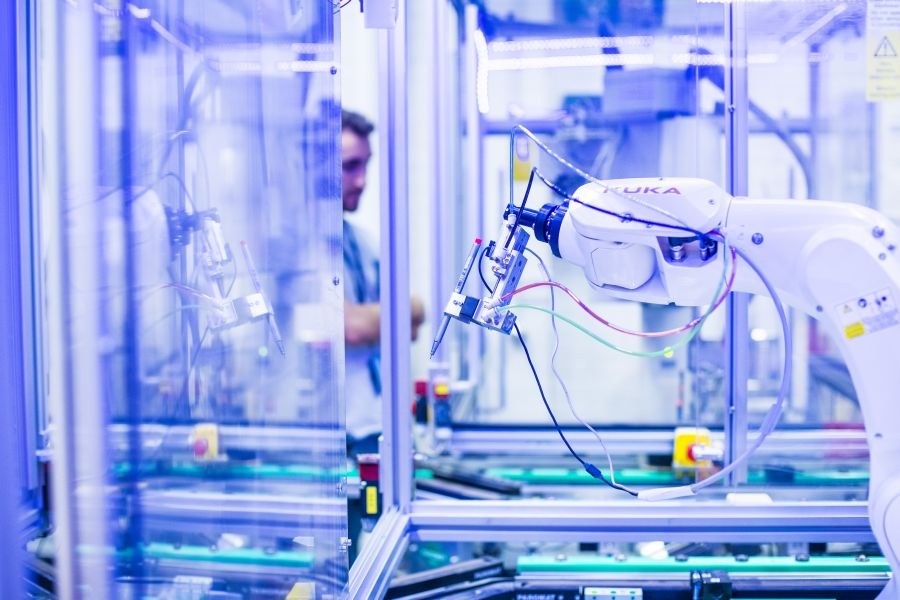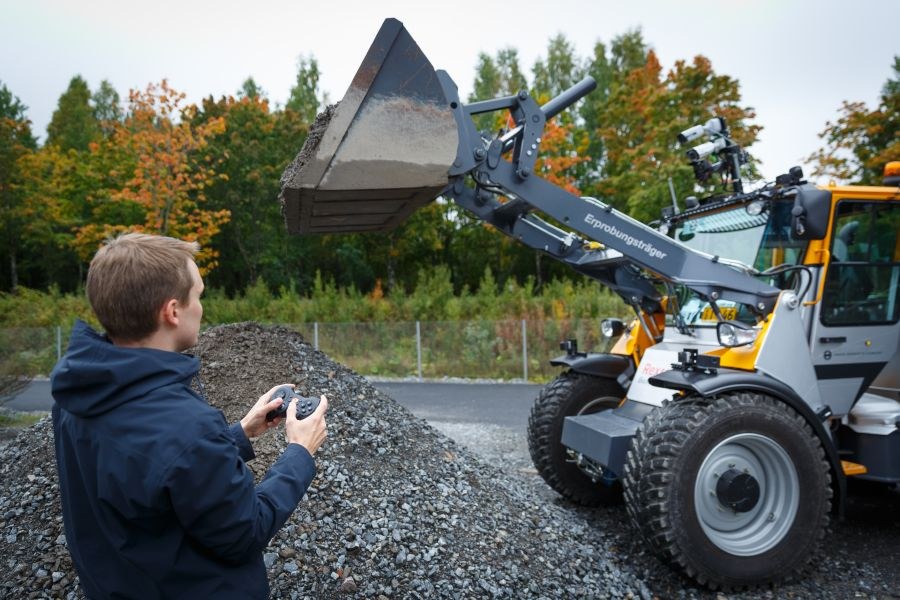Tampere becomes the first in Finland to start educating Masters of Science (technology) in Robotics

At Tampere University, robotics has been taught for years as part of studies in such fields as automation and mechanical engineering, software engineering, mechatronics, artificial intelligence and signal processing. The new Finnish-language Bachelor’s and Master’s degree programme in robotics brings together the best bits of existing studies in robotics.
“A few completely new courses are on the way, and existing courses have been adapted to support robotics. Courses have also been regrouped,” Project Manager Jyrki Latokartano says.
The education is jointly organised by the Faculty of Information Technology and Communication Sciences and the Faculty of Engineering and Natural Sciences. Applications for the education, which will start next autumn, will be invited in the second round of the joint national application procedure in March.
There is plenty of work to be done in human-machine collaboration
Robotics is being developed to make human work lighter, more ergonomic and safer. Robotics is already everywhere: from self-driving cars and vacuum cleaners to forest harvesters. Robotics can also be used to clean up the seas and sort waste.
According to Latokartano, advances especially in machine learning and artificial intelligence are driving robotics forward by leaps and bounds. However, there is still work to be done to make robots really useful beyond industry.
“Enough robots have already been made for engineers, now we should start making them for people!” Latokartano notes. “The challenge is on the social side, how to get along with robots without programming skills. We are trying to develop robots so that it is as natural as possible for humans and robots to work together,” he adds.
If you love coding, building things, or nursing - robotics is for you!
According to Associate Professor (tenure track) Roel Pieters, who studies and teaches human-robot interactions, it is the multidisciplinarity that makes robotics fascinating.
“It takes creativity, problem-solving skills, and a hands-on approach to make a robot work. With us, students can focus on the areas they want, for example, manufacturing or forestry, or on such topics as modelling and control, programming, or sensors. A diverse mix of skills is of interest to both industry and academic employers,” Pieters says.

In Latokartano’s view robotics is suitable, for example, for a theorist like a physics and mathematics expert who is interested in developing, say, machine learning or robot control. It is also a natural choice for those who love mechanics and building things. Robotics also has a soft side and many applications in such areas as education and welfare.
“The best thing is that you can progress according to your own enthusiasm, towards code, physical implementation, or human-robot collaboration. In addition to or instead of technology, the subject can also be approached from a behavioural sciences’ perspective. Robotics is applied research that relies heavily on basic research,” Latokartano says.
University develops robotics especially for industry
At Tampere University, a significant part of robotics research is related to the development of robot technologies. The University has developed algorithms for self-driving cars, software to move hydraulic booms, and light-responsive materials.

Business cooperation is an essential part of the education and is started at an early stage. There are many joint projects with industry, and the robotics developed at University can be seen, for example, used in the AutoMine concept at Sandvik and in autonomous container handling equipment by Cargotech in ports.
The degree programme, which will start in August 2023, will admit 40 students. There has been no increase in the number of places, but a proportional reduction in the number of students enrolled in automation and mechanical engineering and information technology.
At the same time, Tampere University is also launching a Master's of Science degree programme in Energy Transition (news in Finnish).
Lisätiedot
Jyrki Latokartano
040 706 0122
jyrki.latokartano [at] tuni.fi
Roel Pieters
050 447 8347
roel.pieters [at] tuni.fi
Text: Anna Aatinen
Photos: Jonne Renvall and Sami Reivinen





